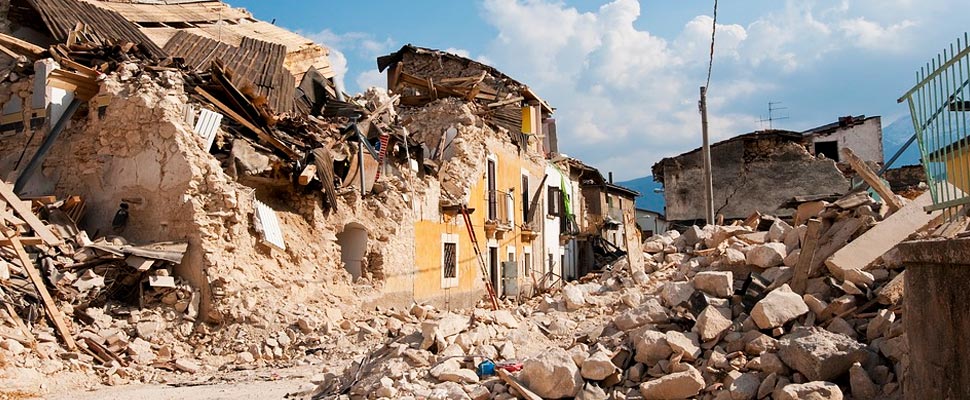The 6 most important earthquakes in history
Recently, it was the 50th anniversary of the earthquake in Yungay, Peru. We decided to see what were the most important earthquakes in history.

We tell you what have been the most shocking earthquakes around the world. / Photo: Pixabay – Reference Image
LatinAmerican Post | Ariel Cipolla
Escucha este artículo
Leer en español: Los 6 terremotos más importantes de toda la historia
On May 31, a 7.9-magnitude earthquake had buried the city of Yungay, in Peru, causing a disaster. According to what the Heraldo website mentions, the cities of Yungay and Ranrahirca "disappeared under an immense layer of stones, ice and water", as a result of the breakage of a wall in the Huascarán mountain.
From the RPP Peru website they mention that, in seismic terms, "it was not destructive", in the sense that it had a depth of approximately 74 kilometers. However, that does not mean that there were no victims. On the contrary: more than 80 thousand deaths were registered, which is a huge number.
That is to say, different side effects tend to be generated, as is often the case with tsunamis, which break everything in their path and generate floods. Taking this case as background, we decided to talk about other earthquakes that shocked the planet.
1. Ecuador, 1906
According to what is recorded on the website of the Geophysical Institute of the National Polytechnic School, on January 31, 1906, there was an earthquake of magnitude (Mw) 8.8 that had its epicenter in the Pacific Ocean, which occurred off the Ecuador-Colombia border.
According to what is mentioned, this earthquake had not caused great damage in the surrounding areas, since, at that time, urban centers were almost non-existent. However, it was felt all over the coast of Central America, San Francisco, and even part of Japan, lasting approximately half an hour.
2. Chile, 2010
El Mundo reported that it was an "earthquake that changed the Earth." Many of us will remember it, since, on February 27, 2010, Chileans experienced great seismic activity, specifically in the cities of Curanipe and Cobquecura, although it could also be felt in Buenos Aires and Sao Pablo.
Read also: How to properly educate people about the environment
In this way, the central-southern part of the country experienced an earthquake of approximately 2 minutes and 45 seconds. This generated a redistribution of the planet's land mass, causing changes in the rotation and axis of the Earth. In addition, it had a balance of 525 fatalities and 25 missing persons, all due to its magnitude of 8.8 degrees.
3. Sumatra, 2004
In this case, we are talking about a true underwater earthquake, which managed to hit the Indian Ocean with force on December 26, 2004, having an epicenter on the coast of Ao Nang, in Indonesia, affecting almost all of South and Southeast Asia.
This event was known as the “Asian tsunami”, achieving 9.1 degrees on the Richter scale, in addition to lasting approximately 8 to 10 minutes. This catastrophe caused the death of more than 200,000 people, due to the generation of several deadly tsunamis.
4. Japan, 2011
On March 11, 2011, the eastern part of Japan was attacked by one of the country's largest earthquakes, with an intensity of 9.0 degrees. According to what the CNN media mentions, it was produced 371 kilometers northwest of Tokyo, having a depth of 24 kilometers.
The balance of victims and disappearances from this event was more than 22,000, with almost 20,000 deaths and some 2,500 missing. The causes? The initial earthquake, the subsequent tsunami, and the health conditions generated by this natural disaster.
5. Alaska, 1964
In this case, we are talking about a magnitude 9.2 earthquake that was about 4.5 minutes long, it is considered the most powerful earthquake in the history of North America, which brutally attacked the regions of Alaska on March 27, 1964.
Read also: The billionaires who started their lives in poverty
This event had a large scale, since, after its inception, it could have affected some 200,000 square kilometers. Then, the typical tsunamis appeared, which caused the death of at least 131 people, a low number considering the magnitude of the event.
6. Chile, 1960
The BBC media considers it as "the largest recorded earthquake in history." Basically, it took place on May 22, 1960 in the Chilean city of Valdivia. At 9.5 degrees magnitude, the scientific community considers that all the energy released was 20,000 times more powerful than the bomb on Hiroshima of World War II.
All of this, of course, left behind a huge amount of destruction. Among them, at least 1,655 deaths, 3,000 wounded, and some 2,000,000 people who saw their homes collapse. Therefore, we see that nature is wise, but it can also be lethal for human beings.





